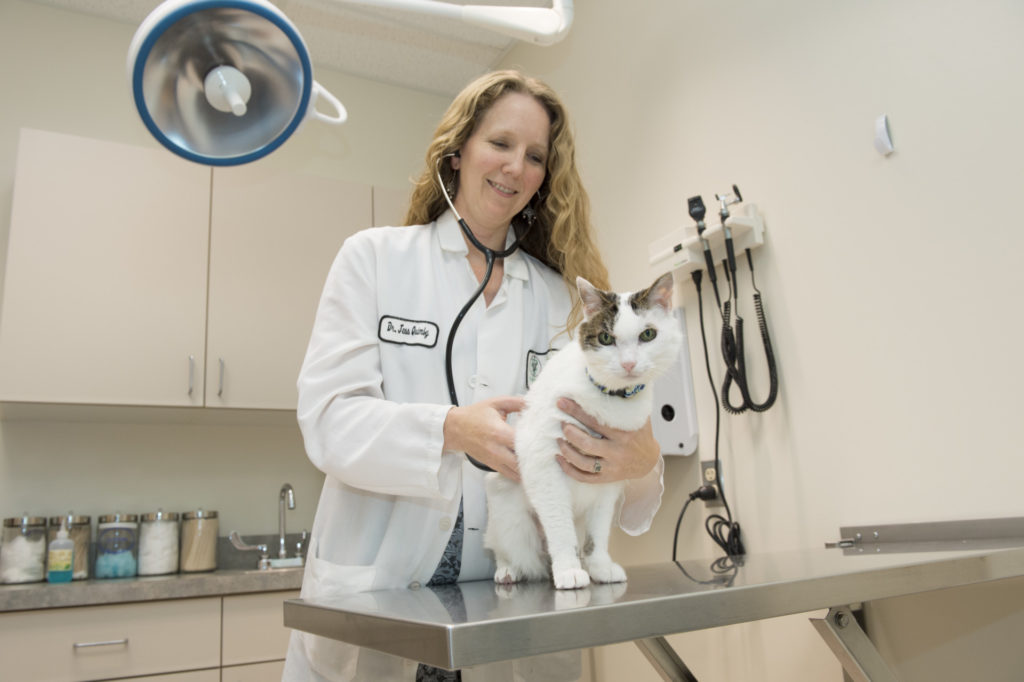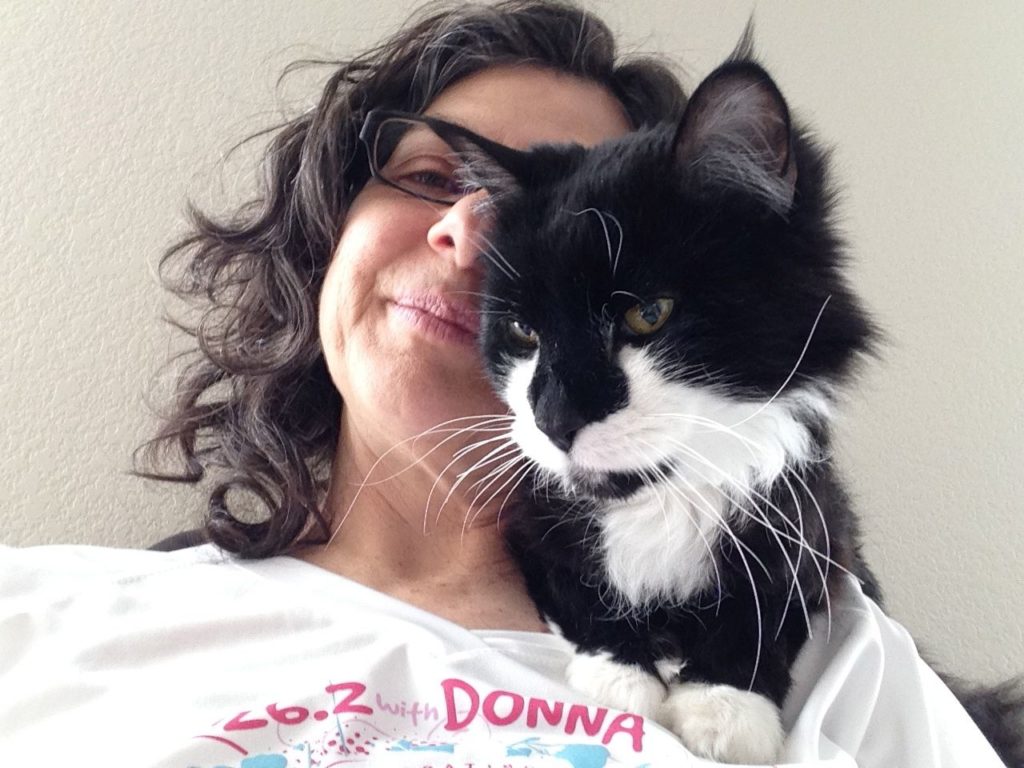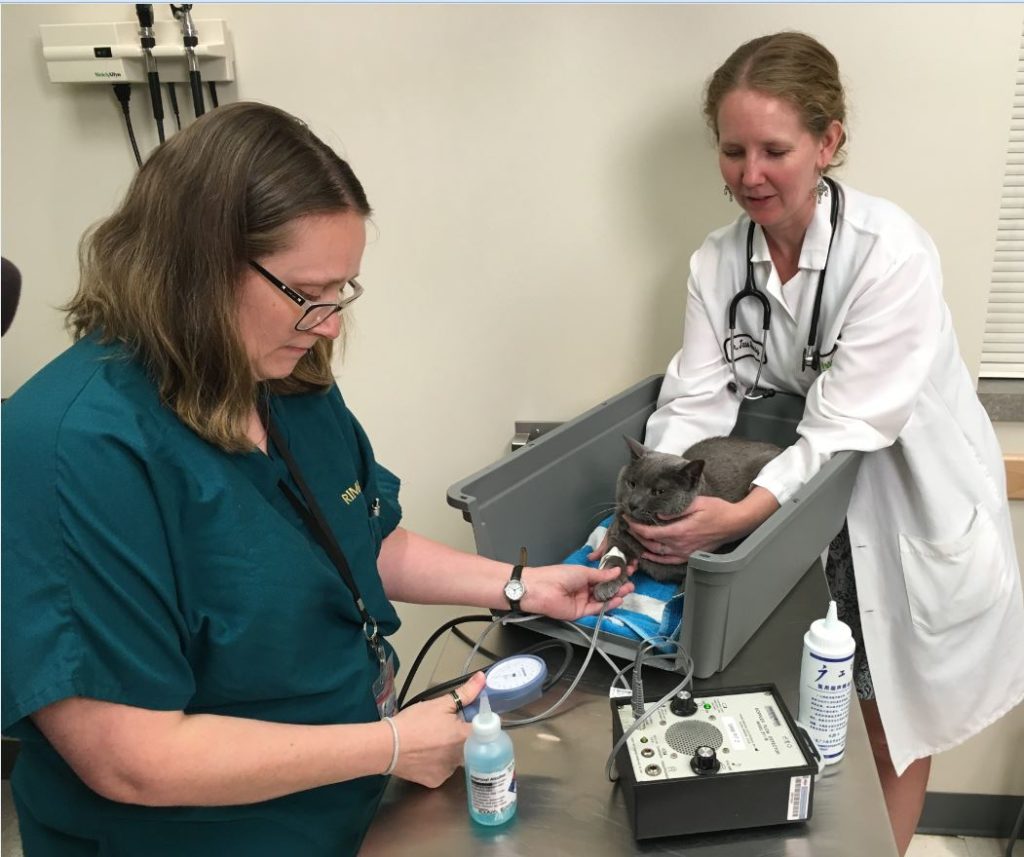Like many cat owners, Dr. Jessica Quimby spends a lot of time worrying about feline health. With six cats of her own, this veterinarian knows the odds are that at least one will develop chronic kidney disease. In fact, her cat Sophie already has the highly common and incurable disease.
“I’m really surprised when a cat in its mid-teens doesn’t have kidney disease. It’s so common that it is more abnormal for an older cat to have normal kidney function,” said Quimby, an assistant professor and board-certified internal medicine specialist in the Colorado State University College of Veterinary Medicine and Biomedical Sciences.
Veterinarians estimate that up to half of cats over 15 years old will develop renal failure. That’s 2 million cats in the United States.
Chronic kidney disease is irreversible, so treatment focuses on treating complications through changes in diet, medicating high blood pressure, and keeping the cat hydrated. Quimby is a cat crusader, doggedly pursuing these and other treatments that will make life better for ailing cats and their humans.
“As an internal medicine specialist, I work with both cats and dogs, but I always had the goal of working with cats – elderly cats, complicated cats. I grew up with cats on a farm and saw them suffering from various diseases, so I came to CSU so I could have the power to do studies and learn new things to help them,” said Quimby, whose office in the James L. Voss Veterinary Teaching Hospital is decorated with photos and paintings of feline friends.
Does your cat have chronic kidney disease?
Symptoms may be subtle; see your veterinarian if you have concerns about your cat’s health.
Signs may include, but are not limited to:
- Weight loss
- Poor appetite
- Lethargy
- Increased thirst
- Increased urination
- Vomiting
- Poor coat
- Bad breath
She leads the chronic kidney disease program within the Center for Companion Animal Studies at CSU. For the past 10 years, she has studied the pathology of aging kidneys and whether mesenchymal stem cells and appetite stimulants can help cats with kidney disease feel better and live longer.

But Quimby needs help. She’s looking for 20 cats with early to moderate kidney disease and a picky appetite to join her cat Sophie in a new clinical trial.
She’s convinced a medicated goop rubbed on cats’ ears can help them eat better. The technical term is mirtazapine transdermal gel. Mirtazapine stimulates appetite, but it’s not easy to give a picky cat a pill. So why not apply the medicine through the skin?
Quimby’s latest clinical trial builds on five previous studies into whether a transdermal gel works and how the appetite stimulant can help improve nutrition for cats, who become picky eaters as their kidney disease progresses.
“With most drugs there’s information about how to use it in humans and in dogs, but there’s almost never information about how to use it in cats, so typically when we start with a drug, we have to start at the very beginning and learn how to use it in healthy cats before we can understand how to use it in sick cats,” Quimby said.
You might say she had to start from scratch.

“We’re very excited about this trial because it takes us to that next level, which is using the transdermal gel in cats with kidney disease. They have a very picky appetite, they get very thin as their muscles atrophy. They’re basically starving to death, which is a really hard thing to watch,” she said.
Why concentrate on appetite when there are so many other worries with renal failure? Anemia, high blood pressure, low potassium and other problems arise from chronic kidney disease. Yet adequate nutrition and body weight can help patients maintain quality of life, Quimby explained.
“We ask ‘What can we do to make them feel better?’ And that’s when an appetite stimulant can help so they don’t get super-skinny. As an owner, if your kitty’s not eating, it becomes a horrible struggle and that’s when it may come time to say goodbye, and that’s a very emotional issue,” she said.
Through her years of research, Quimby has found that pet owners are motivated to enroll in clinical trials because this form of research allows sick pets to receive treatments still under development, while generating information that will further improve therapies for the benefit of other pets.
Students, cats and their owners benefit
As a veterinary student, Dr. Kellyi Benson watched her own cat suffer through chronic kidney disease. “My kitty Kobe was diagnosed with early stage CKD and I was sitting in one of Dr. Q’s lectures in my third year. I went up to her and said, ‘My cat still has an appetite but just doesn’t finish all her food.’” Kobe became one of the “Quimby cats,” and Benson found a new career direction. She soon will return to the teaching hospital as an internal medicine resident, gaining experience to become board-certified in the field.
“It was helpful for my kitty and for me as well,” said Benson. “It was neat to see the paradigm, being involved in the research and being a client at the same time. It allowed me to have more empathy for my clients.”
When Debra Josephson Abrams’ cat Sylvester became ill with a variety of maladies, he started losing his appetite but wouldn’t take a pill. The transdermal mirtazapine was a life-saver, at least for a while. “It was the easiest thing in the world. You squeeze a little glob and just rub it in his ear,” Abrams said. “I’m a super supporter of what they’re doing at the hospital. I put them in my will.”
Clients in this new trial will take their cats with kidney disease to the CSU Veterinary Teaching Hospital for three visits. Eligible cats will receive complimentary blood, urine and thyroid tests to confirm they have stable kidney disease and no other concurrent illness prior to participation. Clients will keep a diary and apply a placebo gel and the medicated get to the ear for a total of six weeks. All costs of the visits and the gel medication are covered by the study, which is funded by the Winn Feline Foundation.
Clinical Trials
Clinical trials for companion animals are much like those for people: Patients with acute and chronic illness may voluntarily enroll to receive treatments that are currently under development.
For patients meeting enrollment qualifications, clinical trials provide access to high-quality care and leading-edge therapies that are not available elsewhere. Those enrolled follow treatment protocols and regularly check in with their medical teams for exams and assessment of treatment effectiveness.
For veterinarians and doctors, the studies yield critical information that helps improve detection and treatment of illness for the patients enrolled – and for countless future patients.
CSU’s James L. Voss Veterinary Teaching Hospital usually offers more than 30 clinical trials at any given time. The studies are designed for dogs, cats and horses. About half of the hospital’s clinical trials are specifically for pets with cancer; others address different illnesses. In many cases, the information gained through veterinary clinical trials may be translated into human medicine because of similarities in disease between people and animals.
Fees vary for the veterinary care provided through clinical trials; this is discussed with animal owners during enrollment.
For a list of trials and information about each, visit the hospital’s Clinical Trials webpage.
“She’s a powerhouse”

Quimby and other leaders in the field of nephrology (kidney diseases) published the “International Society of Feline Medicine Consensus Guidelines on the Diagnosis and Management of Feline Chronic Kidney Disease” in the March 2016 issue of the Journal of Feline Medicine and Surgery.
Co-author Dr. Catherine Langston, a veterinary nephrologist and associate professor at The Ohio State University College of Veterinary Medicine, calls Quimby a “powerhouse.”
“When I think of Jessica, I think ‘feline kidney disease’ because she is definitely becoming a world leader in that field. Her telomere and pathology work are giving us more information about what’s causing kidney disease. Her research is very clinically practical, too – anything you can do to reduce the number of pills you have to give a cat is great,” Langston said. “She’s definitely been a big advocate for getting studies started and completed and published.”
Learn more about Quimby’s research at her chronic kidney disease page. To donate, please visit https://advancing.colostate.edu/buttons.